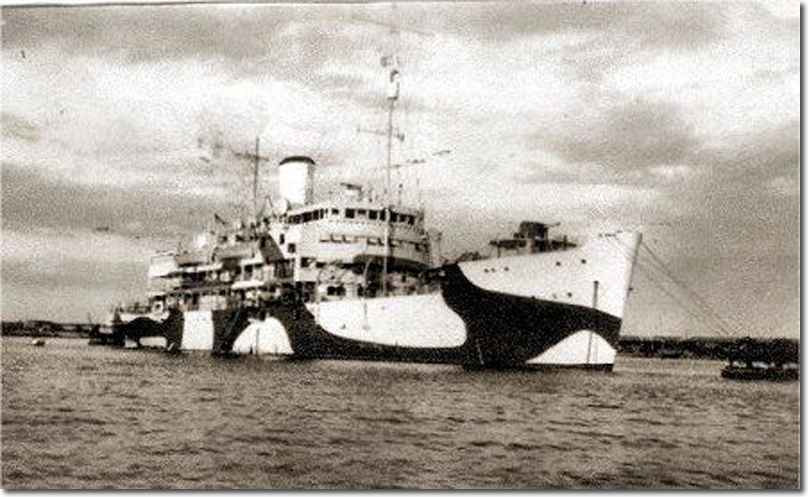|
|


|
| In December 1939, SS Kedah was requisitioned by the Royal Navy as an armed auxiliary vessel number FY035. The Navy made various changes, which included the top section of the funnel being removed; also new taller masts were erected, as well as being armed with two 4-inch guns and one 3 inch. Anti-aircraft gun. Depth charge launchers were placed on the after deck. She served in the north of Borneo and was used as an evacuation ship, prior the fall of Singapore. One her last sailing out of Singapore she was under constant attack from the air, but remained undamaged, thanks to the brilliant seamanship of captain, J.L. Sinclair. However, with bombs falling close to her hull, the massive vibrations damaged her engines and she could only manage a speed of 7 knots. In Batavia, although in urgent need of overhaul, she was ordered to sail to Tjilatjap Indonesia, to take onboard the staff of General Wavell, and some 400 refugees, and take them to Colombo Ceylon. But, she was once again attacked by air, after which her machinery failed completely. She was towed the rest of the way by H.M.S. Dragon. She arrived in Colombo on March 9, where she was fully refitted. Thereafter, she spent the next two years operating in the Bay of Bengal. But in 1945 she was chosen to be the headquarters for the General Staff during the invasion of Malaya. For this purpose she was suitably fitted out with an array of radio equipment. On September 5, 1945, "Kedah" was the first ships to re-enter Singapore, flying the flag of rear admiral J. A.V. Morse, and carrying the combined operations staff, senior officers of the British military and the chairman of the Singapore Harbour Board, all in all, a dramatic and historic moment. Photograph Courtesy of ssmaritime.com |
Armed Forces | Art and Culture | Articles | Biographies | Colonies | Discussion | Glossary | Home | Library | Links | Map Room | Sources and Media | Science and Technology | Search | Student Zone | Timelines | TV and Film